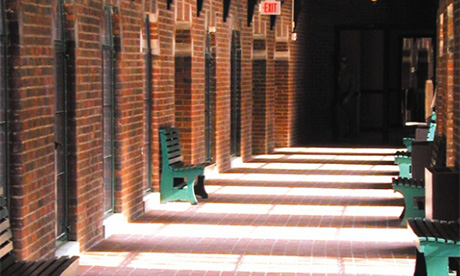Catholic sisters have always responded to the pressing need of the historical moment, whether for hospitals, orphanages, and schools, or for peace, justice, and civil rights.
Today we live in a world where, in the words of Pope Francis, “any genuine attempt by groups within society to introduce change is viewed as a nuisance based on romantic illusions or an obstacle to be circumvented.”
It is in this context that vowed Catholic religious—accustomed to working on the fringes for unpopular causes—have been quietly leading the charge for environmental sustainability.
The “green sisters” are various Catholic religious orders that have integrated Catholicism with environmentalism.
Some are contemplatives who run retreat centers for prayer and re-engagement with nature, while others are activists who travel the world, teaching and ministering to those suffering the effects of climate change.
As the Sisters of Earth—their informal network—they come together for international conferences to share how different regions have been impacted by environmental degradation and discuss how they can work with indigenous cultures to seek solutions.
The green sisters have been doing this work for 20 years.
But while Popes Benedict XVI and John Paul II expressed concern about the looming ecological crisis and its implications for humanity, it was Pope Francis who affirmed the value of these women’s vocation with Laudato Si’.
Sisters, Servants of the Immaculate Heart of Mary Sister Janet Ryan says, “When Francis writes, ‘We are faced not with two separate crises, one environmental and the other social, but rather with one complex crisis which is both social and environmental,’ and when he says that these problems ‘demand an integrated approach to combating poverty, restoring dignity to the excluded, and at the same time protecting nature,’—well, that’s what we’ve been talking about all along.”
A sense of vocation
Far from fading into obscurity, shuttering their mother-houses, or turning off their lights, the green sisters have gone outside, planted community gardens, and installed solar panels.
While the vocational crisis is all too real—the average age of vowed religious increases every year—the Sisters of Earth have found new energy and purpose in the environmental movement, and many of their communities are thriving, brought together with shared environmental and religious commitments.
The Sisters, Servants of the Immaculate Heart of Mary (IHM) community in Monroe, Michigan is one such group of women religious.
In better times, the sisters ran a college and several high schools in southern Michigan. But by the late 1990s they had sold much of their property, and their Motherhouse, a 376,000-square-foot Depression-era behemoth, required either a complete overhaul or demolition.
Their situation was one all too familiar for many American Catholic religious.
However, the community reacted not by selling their land or closing the building but by becoming pioneers of eco-renovation.
“What had begun as a young, college-driven teaching community had become a senior community,” says Ryan, who served as a member of the IHM Leadership Council from 2000–2012.
Selling the land and razing the house to create a smaller, cheaper, more manageable home for an aging population seemed like the most practical choice for the congregation.
But while this might have been the easier choice, the sisters eventually decided it wasn’t the best decision for their future—or for the future of the community they served.
Monroe, like so many American cities, suffers from factory closures and the loss of major employers. Continue reading
- Image: US Catholic
News category: Features.




